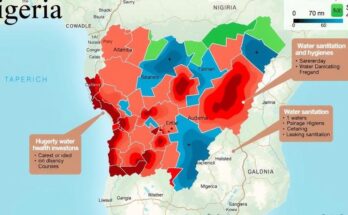Asteroid 2024 YR4’s collision risk with Earth has increased to 2.3%, raising alarms. Estimated to measure up to 200 meters, it could wreak devastation more severe than 500 atomic bombs. Predicted impacts could affect densely populated areas including India and Bangladesh. NASA has outlined potential impact zones as scientists continue to monitor its trajectory leading up to 2032.
Asteroid 2024 YR4 poses an increasing risk of collision with Earth, with its probability rising from 1 percent to 2.3 percent. Scientists remain concerned due to the lack of information regarding its size and speed. Estimated to measure up to 200 meters, NASA has started to identify potential impact zones to prepare for possible disaster scenarios involving densely populated regions, including India, Pakistan, and Bangladesh.
Should asteroid 2024 YR4 collide with Earth, it could unleash destruction equivalent to over 500 atomic bombs, threatening the lives of millions. David Rankin, an engineer at NASA’s Catalina Sky Survey, has outlined a risk corridor that encompasses areas from northern South America to parts of Asia and sub-Saharan Africa. Countries within this corridor, such as India and Bangladesh, are at heightened risk of devastation from this event.
Discovered in December 2022, asteroid 2024 YR4 has escalated concerns among the scientific community, especially following the reassessment of its collision probability. It has been categorized as a Level 3 threat on the Torino scale, highlighting the potential danger it poses as it approaches Earth.
The asteroid is projected to pass at a distance of 106,000 kilometers on December 22, 2032, albeit with a significant margin of error. This trajectory could lead to a collision within a narrow corridor stretching from Central America to various parts of the Atlantic and Africa, ultimately threatening India directly.
In conclusion, the increasing likelihood of asteroid 2024 YR4 colliding with Earth represents a significant concern for scientists and the global community. With its potential to cause catastrophic damage, especially in densely populated regions like India, Pakistan, and Bangladesh, it is imperative that ongoing observations and assessments be conducted. The urgency for preparedness actions can not be overstated as this asteroid’s monitoring continues over the coming years.
Original Source: www.india.com




